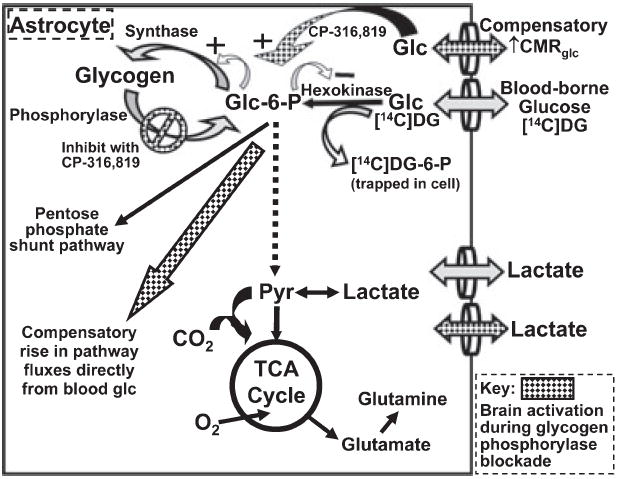Fig. 2.

Compensatory increase in glucose utilization in astrocytes during sensory stimulation with blockade of glycogen phosphorylase. Schematic diagram of glucose metabolic pathways illustrating the three major pathways for utilization of glucose-6-phosphate (glc-6-P) in astrocytes: the glycolytic pathway to form pyruvate, the pentose phosphate shunt pathway to generate NADPH and pentose phosphates (most of which re-enter the glycolytic pathway after transformation by the transketolase/transaldolase reactions) and the glycogen pathway (for more details, see Hertz et al. 2007). Note that glc-6-P feedback inhibits hexokinase (negative sign) and activates the glycogen synthesis pathway (plus sign). Inhibition of glycogen phosphorylase with CP-316,819 during brain activation renders blood glucose the sole source for glc-6-P via the hexokinase reaction, which is specifically measured with the [14C]deoxyglucose (DG) method (see text). CP-316,819-induced compensatory changes in utilization of blood-borne glucose (hatched symbols) at the hexokinase step are quantified by means of changes in the rate of [14C]DG phosphorylation, from which rates of glucose utilization are calculated.
